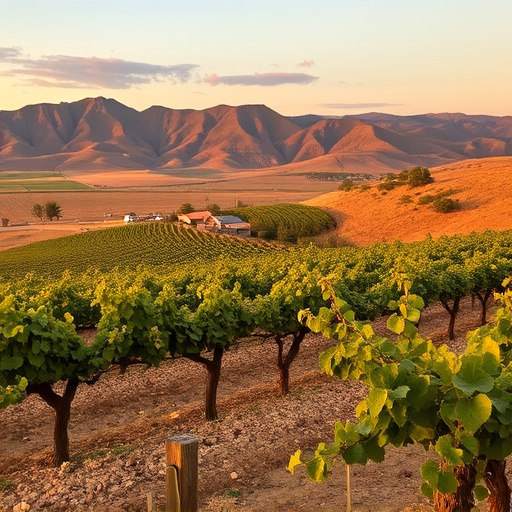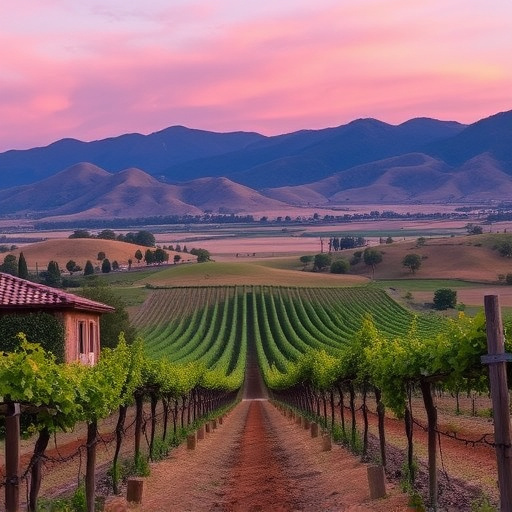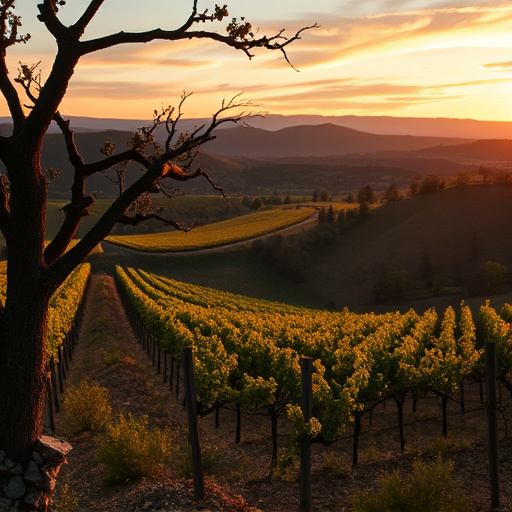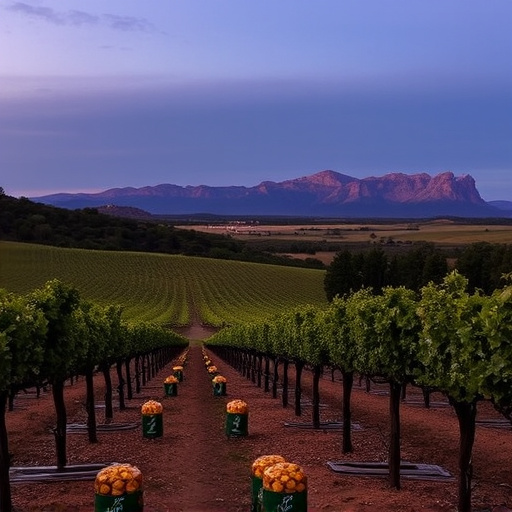Sonoita, Arizona, at an elevation exceeding 4,000 feet, offers unique challenges and advantages for winemaking. Cooler temperatures slow fermentation, preserving delicate flavors and aromas while presenting disease pressure and ripening hurdles. Despite these challenges, Sonoita AZ wine is renowned for its high acidity, crispness, and distinct varietal expressions not typically found in lower-altitude wines. The region's microclimate and high elevation contribute to exceptional grape growth, making it a must-visit destination for wine enthusiasts seeking unique sonoita az wine experiences.
“Uncover the enchanting world of high elevation winemaking in the sun-kissed town of Sonoita, Arizona. This article delves into the unique challenges and unparalleled benefits of crafting wines at elevated heights. With a rich history dating back to early settlers, Sonoita’s wine culture has blossomed, offering distinct flavors and varietals that captivate palates. Learn how altitude influences grape growth and transforms them into exquisite wines, explore innovative techniques employed by local winemakers, and discover the magic behind Sonoita AZ wines.”
- The Unique Challenge and Benefits of High Elevation Winemaking
- Sonoita Arizona: A Brief Overview and Its Wine History
- How Altitude Impacts Grape Growth and Wine Quality
- Techniques Used in High-Elevation Winemaking in Sonoita
- Exploring the Distinct Flavors and Varietals of Sonoita AZ Wines
The Unique Challenge and Benefits of High Elevation Winemaking

High elevation winemaking in Sonoita, Arizona presents a unique set of challenges and benefits distinct from its lower-altitude counterparts. The region’s considerable height—typically above 4,500 feet—introduces specific factors that shape the wine’s character. Cooler temperatures slow down the fermentation process, allowing for slower maturation and preserving delicate aromas and flavors. However, this same climate can pose difficulties in terms of managing disease pressure and ripening grapes consistently each year.
Despite these challenges, high elevation winemaking in Sonoita AZ wine has yielded remarkable results, contributing to the region’s growing reputation as a premier viticultural area. The slower ripening allows for higher acidity levels, resulting in well-balanced wines with crispness that resonates on the palate. This unique terroir also encourages distinct varietal expressions, offering wine enthusiasts a chance to explore nuanced flavors and aromas not commonly found in lower elevation wines.
Sonoita Arizona: A Brief Overview and Its Wine History

Sonoita Arizona, nestled in the picturesque Santa Catalina Mountains, is a charming and vibrant community known for its rich cultural heritage and, more recently, its thriving wine industry. With an elevation exceeding 4,000 feet, this high desert town presents unique challenges and opportunities for winemaking, contributing to its distinctive wine profile. The area’s history with viticulture dates back to the late 1800s when missionaries introduced grapevines, laying the groundwork for future wine production.
Over time, Sonoita has developed a strong reputation as a niche yet prominent wine region in Arizona. Local wineries leverage the area’s distinct microclimate and high elevation, which provide excellent day-night temperature variation, ideal for growing a variety of grapes. This combination of factors results in wines with exceptional quality and character, earning Sonoita its place on the map as a must-visit destination for wine enthusiasts exploring sonoita az wine experiences.
How Altitude Impacts Grape Growth and Wine Quality

In the enchanting hills of Sonoita, Arizona, nestled among the towering cacti and vibrant desert landscape, lies a unique viticultural phenomenon—high elevation winemaking. This region, with its remarkable altitude, offers distinct advantages for grape cultivation and wine production. The higher elevation provides cooler temperatures, which are particularly beneficial for grape varieties that thrive in moderate climates. This temperature regulation allows grapes to ripen slowly, leading to enhanced flavor development and balanced acidity, key attributes sought after by winemakers.
The impact of altitude on Sonoita AZ wine is profound. Cooler nights and warmer days create a diurnal temperature shift, encouraging gradual sugar accumulation in the grapes while preserving natural acids. This delicate balance results in elegant, complex wines with distinct character. The unique terroir, influenced by both altitude and desert climate, contributes to the distinctive flavors and aromas that make Sonoita wines renowned among enthusiasts.
Techniques Used in High-Elevation Winemaking in Sonoita

High-elevation winemaking in Sonoita, Arizona, presents unique challenges and opportunities for viticulturists and winemakers. The region’s high altitude—averaging around 5,000 feet above sea level—impacts grape growth and maturity, often leading to later harvests compared to lower elevation areas. Winemakers in Sonoita AZ wine must carefully manage irrigation and canopy management to prevent over-ripening due to the intense desert sun. Techniques like canopy pruning and shading help regulate temperature and sunlight exposure, ensuring grapes retain their balance of sugars, acids, and flavors.
The cool nights and warm days characteristic of high elevations slow down ripening, allowing for a gradual accumulation of complex aromas and tannins in the grapes. Winemakers take advantage of these conditions by employing methods such as cold maceration—soaking grape skins in cool fermenting musts to extract color, tannins, and flavor compounds—and extended malolactic fermentation to soften acidity. These techniques contribute to the distinctive character of Sonoita’s wines, known for their vibrant fruit flavors, balanced acidity, and robust tannins that reflect the unique terroir of this high-altitude wine region.
Exploring the Distinct Flavors and Varietals of Sonoita AZ Wines

Sonoita, Arizona, nestled high in the Sonoran Desert, has carved out a unique niche for itself in the world of winemaking. The region’s extreme elevation—often exceeding 5,000 feet—gives its wines a distinct character. Here, grapes mature slowly under intense sunlight and cool nights, resulting in concentrated flavors and diverse varietals that set Sonoita AZ wine apart. Visitors can expect to taste notes of bright red fruits, like cranberry and cherry, intertwined with subtle hints of spice and earthiness.
The local terroir supports a range of grape varieties not typically found at lower elevations, including Grenache, Mourvèdre, and Tempranillo. These grapes thrive in the region’s well-draining soils and benefit from the area’s prolonged dry season, leading to wines with remarkable balance and complexity. Exploring Sonoita’s wineries offers a chance to uncover these unique flavors and discover why its small-batch productions are gaining recognition among wine enthusiasts.
High elevation winemaking in Sonoita, Arizona, offers a unique set of challenges and benefits, shaping the distinct flavors and varietals of its renowned Sonoita AZ wines. By understanding how altitude impacts grape growth and employing specialized techniques, winemakers here have cultivated a vibrant and diverse wine culture. Exploring these intricacies not only highlights the art of high-elevation winemaking but also invites wine enthusiasts to appreciate the unique terroir that makes Sonoita AZ wines so special.
